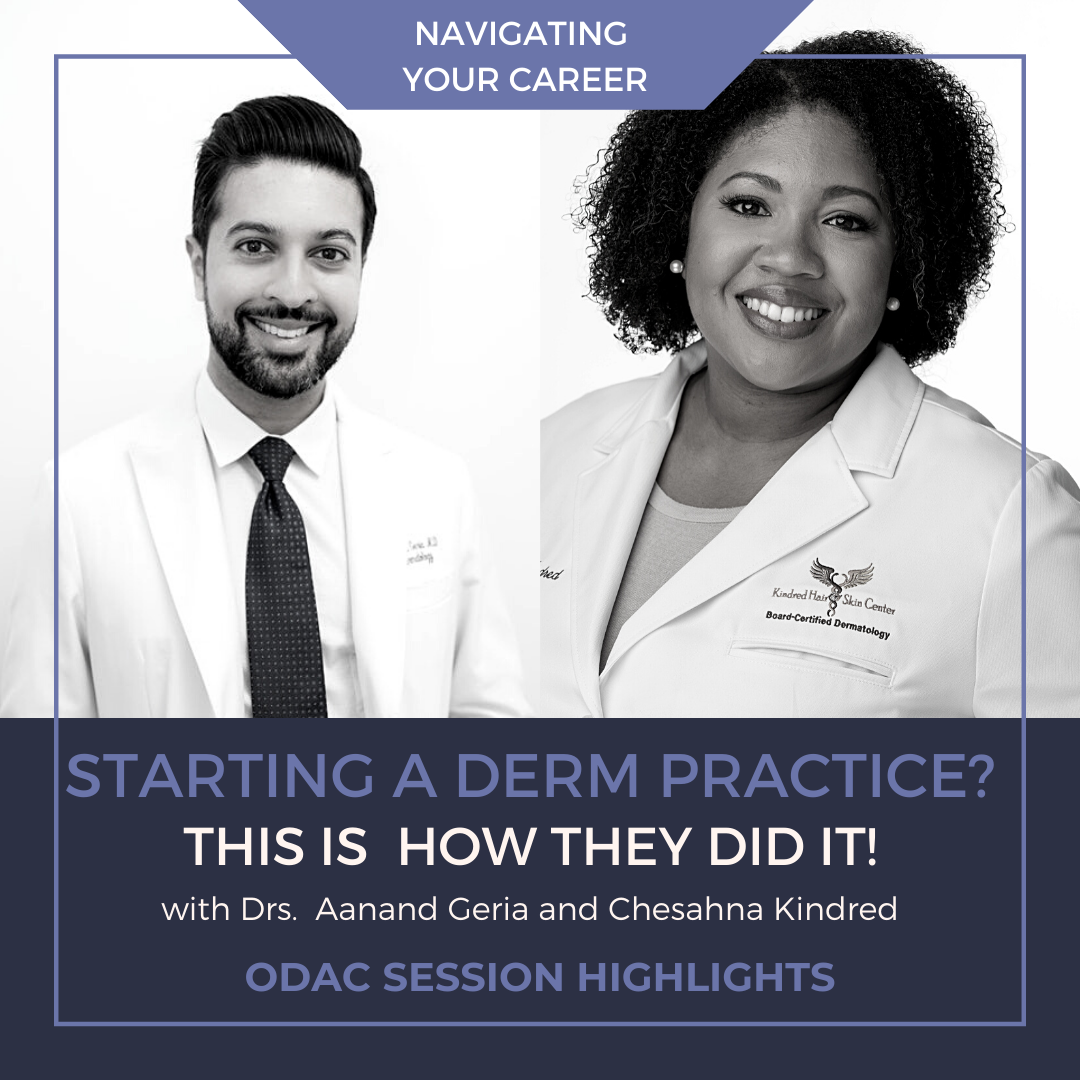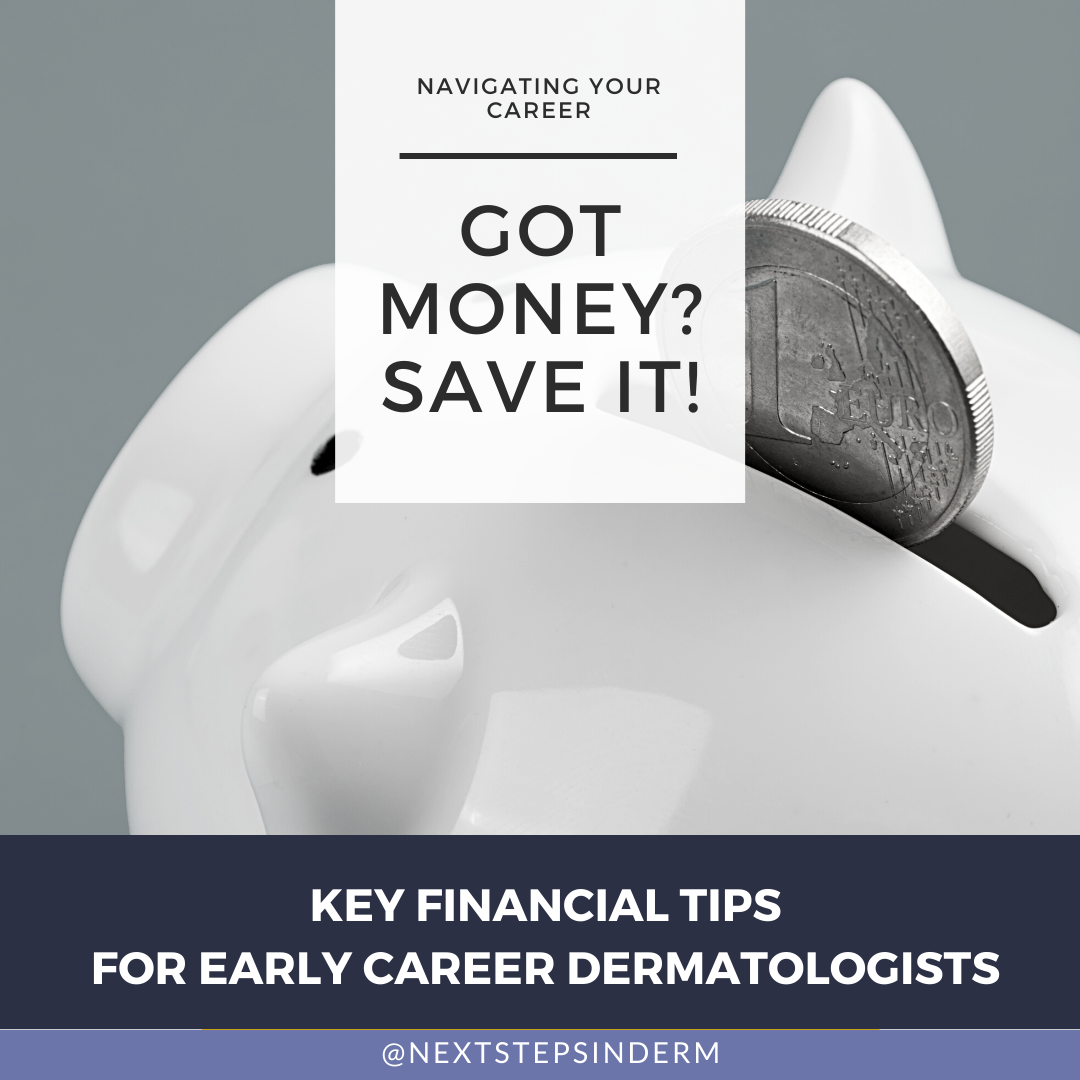Thinking of Starting a Derm Practice? Here is How!
 Starting a dermatology practice is a dream that many dermatologists share. The freedom to decide how and when you work, building a business, increasing physician autonomy, and starting a legacy are some attractive aspects of starting a practice. However, when taking in the immense burden of building a business, things can seem quite daunting and overwhelming. At the 2021 ODAC Dermatology, Aesthet …
Starting a dermatology practice is a dream that many dermatologists share. The freedom to decide how and when you work, building a business, increasing physician autonomy, and starting a legacy are some attractive aspects of starting a practice. However, when taking in the immense burden of building a business, things can seem quite daunting and overwhelming. At the 2021 ODAC Dermatology, Aesthet …
 Starting a dermatology practice is a dream that many dermatologists share. The freedom to decide how and when you work, building a business, increasing physician autonomy, and starting a legacy are some attractive aspects of starting a practice. However, when taking in the immense burden of building a business, things can seem quite daunting and overwhelming. At the 2021 ODAC Dermatology, Aesthet …
Starting a dermatology practice is a dream that many dermatologists share. The freedom to decide how and when you work, building a business, increasing physician autonomy, and starting a legacy are some attractive aspects of starting a practice. However, when taking in the immense burden of building a business, things can seem quite daunting and overwhelming. At the 2021 ODAC Dermatology, Aesthet … Continue reading "Thinking of Starting a Derm Practice? Here is How!"


 On this Mnemonic Monday, we challenge you to remember findings/mutations associated with Familial LPL deficiency (type I hyperlipoproteinemia) with the following mnemonic:
AudRey got lipo for her 1st Cat because he had low self-esteem from being blind and having no abs.
Au(d)Re(y)- Autosomal recessive
(got)
Lipo- Lipoprotein lipase deficiency
(for her)
C(at)- Apolipoprotein C-II
( …
On this Mnemonic Monday, we challenge you to remember findings/mutations associated with Familial LPL deficiency (type I hyperlipoproteinemia) with the following mnemonic:
AudRey got lipo for her 1st Cat because he had low self-esteem from being blind and having no abs.
Au(d)Re(y)- Autosomal recessive
(got)
Lipo- Lipoprotein lipase deficiency
(for her)
C(at)- Apolipoprotein C-II
( …  After more than a decade of school and training, dermatologists just starting out receive a substantial pay bump. Yet, according to financial planner Corey Janoff, CFP, there are some financial pitfalls that early career dermatologists can easily fall into.
“Spending before saving. Buying the new ‘doctor’ house too soon. Not prioritizing saving for financial goals before upgrading their l …
After more than a decade of school and training, dermatologists just starting out receive a substantial pay bump. Yet, according to financial planner Corey Janoff, CFP, there are some financial pitfalls that early career dermatologists can easily fall into.
“Spending before saving. Buying the new ‘doctor’ house too soon. Not prioritizing saving for financial goals before upgrading their l …  This month’s Patient Buzz includes several articles that raise the question: How often should we bathe? The celebrity bathing debate started when Jake Gyllenhaal revealed in an interview that he doesn’t bathe often. Mila Kunis and Ashton Kutcher also announced that they only bathe their kids when visibly dirty.
Don’t be caught off guard when your patients ask about the celebrity bathing d …
This month’s Patient Buzz includes several articles that raise the question: How often should we bathe? The celebrity bathing debate started when Jake Gyllenhaal revealed in an interview that he doesn’t bathe often. Mila Kunis and Ashton Kutcher also announced that they only bathe their kids when visibly dirty.
Don’t be caught off guard when your patients ask about the celebrity bathing d …  With a special focus on aesthetics, the September issue of the Journal of Drugs in Dermatology features an outstanding editorial line-up with original articles, features and case reports on topics ranging from soft tissue fillers, non-surgical eyebrow rejuvenation, new topical treatment for keloid scars to mask use during the COVID-19 pandemic causing undesirable post-operative complications and …
With a special focus on aesthetics, the September issue of the Journal of Drugs in Dermatology features an outstanding editorial line-up with original articles, features and case reports on topics ranging from soft tissue fillers, non-surgical eyebrow rejuvenation, new topical treatment for keloid scars to mask use during the COVID-19 pandemic causing undesirable post-operative complications and …